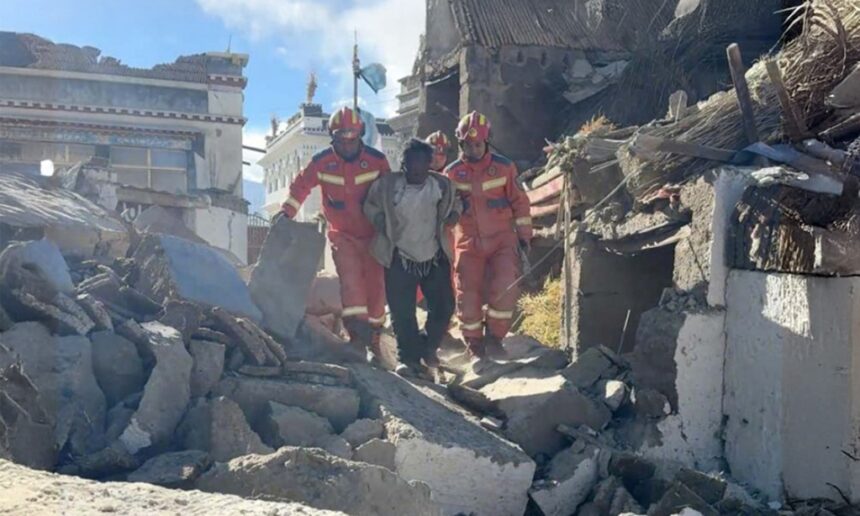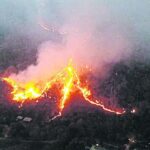China has nearly doubled the number of people injured in Tibet’s deadly earthquake, as rescuers expanded their search for survivors in a remote county near the Himalayan foothills on Friday, despite dwindling chances of survival.
The state-backed Tibetan Review newspaper reported that the magnitude 6.8 quake injured 337 people, the first increase since Tuesday’s initial estimate of 188, while the death toll remained at 126.
It is unclear how many people are still missing, but more than three days later, experts believe those trapped under the rubble died of hypothermia.
At this time of year, nighttime temperatures in the region average between minus 10 and minus 15 degrees Celsius (14 and 5 degrees Fahrenheit, respectively), excluding wind chill.
By Friday, more than 1,600 aftershocks had rocked the disaster zone, making it difficult to relocate over 47,000 affected people to temporary shelters. The headline of a report in the state-run Tibet Daily said the top regional official of China’s ruling Communist Party took action in less than half an hour after the quake.
The earthquake, Tibet’s worst disaster in years, presents authorities with the challenge of quickly rescuing those who remain trapped, locating the bodies of the dead, and housing the tens of thousands displaced.
Wang Junzheng, the party’s secretary, visited the hardest-hit villages in the quake’s epicentre in Tingri County.
“The elderly people held Wang Junzheng’s hands, touched his forehead according to Tibetan customs, and shed tears,” the paper reported.
Home in Tibet Rubble
Many grassroots cadres, including local Tibetan officials, volunteered to sift through rubble and guard resettlement sites despite the fact that their own homes had collapsed, the report said.
Xi met with top ruling party officials to “study and arrange disaster relief,” according to the official Xinhua news agency.
“Efforts must be made to ensure a decisive victory in this tough battle,” it quoted top leaders as saying, urging faster rebuilding and resilience improvement.
In addition to warm tents, authorities must find longer-term housing for the tens of thousands of displaced people while ensuring a consistent supply of daily necessities.
The government has sent 743,000 tonnes of grain, cooking oil, meat, and vegetables to the region, with the commerce ministry stating that an additional 2,000 tonnes of frozen pork and 1,600 tonnes of frozen beef and mutton are ready for delivery.
Potala Palace
Tibet, located high in the Himalayas, is known as the “Roof of the World” for good reason. This region, with its breathtaking plateaus and towering peaks, is home to a deeply spiritual culture based on Tibetan Buddhism.
The capital, Lhasa, is famous for the Potala Palace, which was once the Dalai Lama’s home and is now a sacred landmark. The Tibetan people have a long history of art, music, and storytelling, which is often influenced by their connection to nature.
Despite its beauty, Tibet has experienced political upheaval, particularly regarding autonomy and cultural preservation under Chinese rule. Visitors are drawn to its tranquil monasteries, prayer flags fluttering in the breeze, and strenuous hikes through breathtaking scenery.
For many people, Tibet is more than just a destination; it is an experience that stays with them long after they leave.
Related News:
Southern Japan Struck By Magnitude 7.1 Earthquake

Geoff Thomas is an award winning journalist known for his sharp insights and no-nonsense reporting style. Over the years he has worked for Reuters and the Canadian Press covering everything from political scandals to human interest stories. He brings a clear and direct approach to his work.














